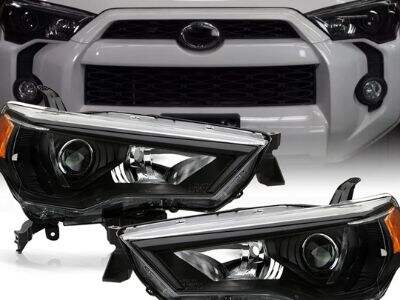Front fenders might appear pedestrian, but they play a big role in determining how a car passes through the atmosphere. Now we’re going to get to the bottom of the way in which front fenders contribute to a car’s performance.
What Are Front Fenders?
Front Fenders The curved pieces over the wheels that absorb all the kickback from the car in front. They are not just for show — they enable the car to cut through the air cleanly. Air pushes against a car when it is driven, causing drag. There’s drag, resistance to speed. Front fenders can be used to minimize drag by directing air around the wheels and sides of the car. That shape is more aerodynamic, so it can slip through the air more efficiently.
Good Readers, How Do Front Fenders Influence the Aerodynamics of a Car?
Front fenders also contribute to the aerodynamic coefficient of a car. This coefficient is a number that reflects how well a car moves through the air. How home and away teams perform is depicted on the face of the card. Front fenders can reduce this number, by reducing drag, or increase it, by disturbing airflow around the wheels. It’s why an engineer designing a new car must carefully study the shapes and sizes of front fenders.
How to design front fenders for performance.
Front fenders add to or detract from a vehicle's performance, depending on their construction. The body has smooth, rounded fenders, which not only help the car pass through the air but also airflow around the car, which reduces drag. But huge fenders, especially ones with sharp edges, can produce turbulence that makes it more difficult for the car to slice through the air. This creates added drag, and reduced fuel economy. That’s why car companies work so hard to design front fenders that improve a car’s capabilities.
Why Front Fenders Are Surprisingly Effective
Front fenders, too, have an unexpected impact on a car’s drag and lift. Drag pulls a car in its opposing direction, and lift pushes a car upward. The magnitude of these forces can be increased or decreased as a function of the shape and size of the front fenders. For instance, if fenders are too large, they can cause lift, making it difficult for a car to maintain contact with the ground. Fenders that are too small may cause drag that forces the car to use more fuel. Car makers can enhance a vehicle’s performance on the road by carefully designing the front fenders.
Improving Front Fender Design
In order to optimize cars for efficiency, high beam headlights designers have to fashion the front fenders sleekly. This reduces drag and turbulence. Well-shaped front fenders let air flow cleanly over the car, enhancing its performance and saving fuel. Companies such as Saivis are committed to producing the most aerodynamic front fenders to help improve performance and provide excellent driving.

 EN
EN
 AR
AR NL
NL FI
FI FR
FR DE
DE IT
IT JA
JA KO
KO PL
PL RU
RU ES
ES LT
LT UK
UK VI
VI HY
HY AZ
AZ KA
KA